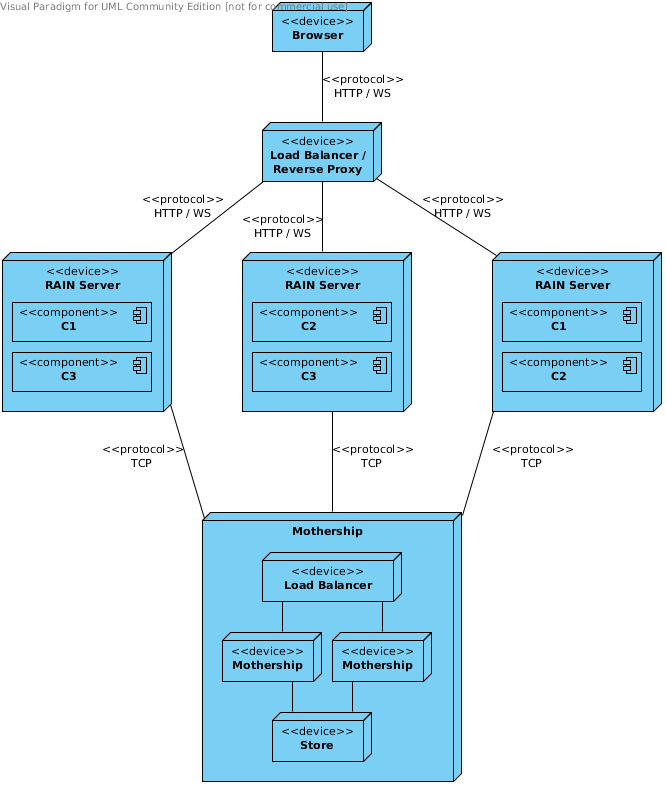Distributed Websockets¶
Currently a RAIN server holds all the components and can decide how to render components or how to handle websocket messages. However, in a distributed architecture with multiple servers holding different components this is no longer true. The servers need to collaborate in order to serve requests. The main problem that appears is how to coordinate the interactions between multiple RAIN servers.
In the websockets case, a persistent connection needs to be maintained between the client and the server and the messages have to be dispatched to the appropriate servers.
Proposed Architecture¶
In order to resolve the coordination problem the Mothership was added to the architecture. Its role is to be aware of all the RAIN servers and the components deployed on them. At startup, each RAIN server connects to the Mothership and registers all the components and intents (a persistent TCP connection is used to communicate between the RAIN server and the Mothership).
Each RAIN server starts a Socket.IO server to listen for websocket connections. When a client initiates a websocket connection, it reaches the load balancer which picks a server and the connection is established with the server. The RAIN server sends a message to the Mothership specifying that the client is connected to it (the client is identified by an unique connection id generated by the server when a new connection is established). This is done in order to be able to send messages back to the client.
When the client sends a message, the server sends a message to Mothership that contains the connection id and the session id of the client, the channel on which the message was sent and the actual message. The Mothership picks a server that can handle messages on the specified channel and sends the message to it.
The events on the /core channel are handled by each server because this is server functionality and the implementation of these handlers is not a part of the core component (it isn’t required for the core component to be present an all servers).
A special case is the log event because the message should be logged on the same server that rendered the component. To resolve this, a server identifier is added to the instance id and when a message is logged from the client the instance id is also sent.
When a RAIN server wants to send a message to a client, it sends a request to the Mothership specifying the connection id of the client. The Mothership sends the message to the server to which that client is connected instructing it to notify the client.
Load Balancing Strategy¶
The balancing for websocket connections and HTTP requests is done by the load balancer (HAProxy). Some issues might appear for browsers that doesn’t support the websocket protocol and xhr polling is used for the transport. The load balancer should be instructed to send all the requests that belongs to the same client to the same server.
The Mothership will also do load balancing when a component is located on multiple servers. For each component, it will construct buckets with the servers on which the component is deployed. Then it will apply the round robin algorithm for each bucket (to do this it will store the last server that handled a request for a specific component).
